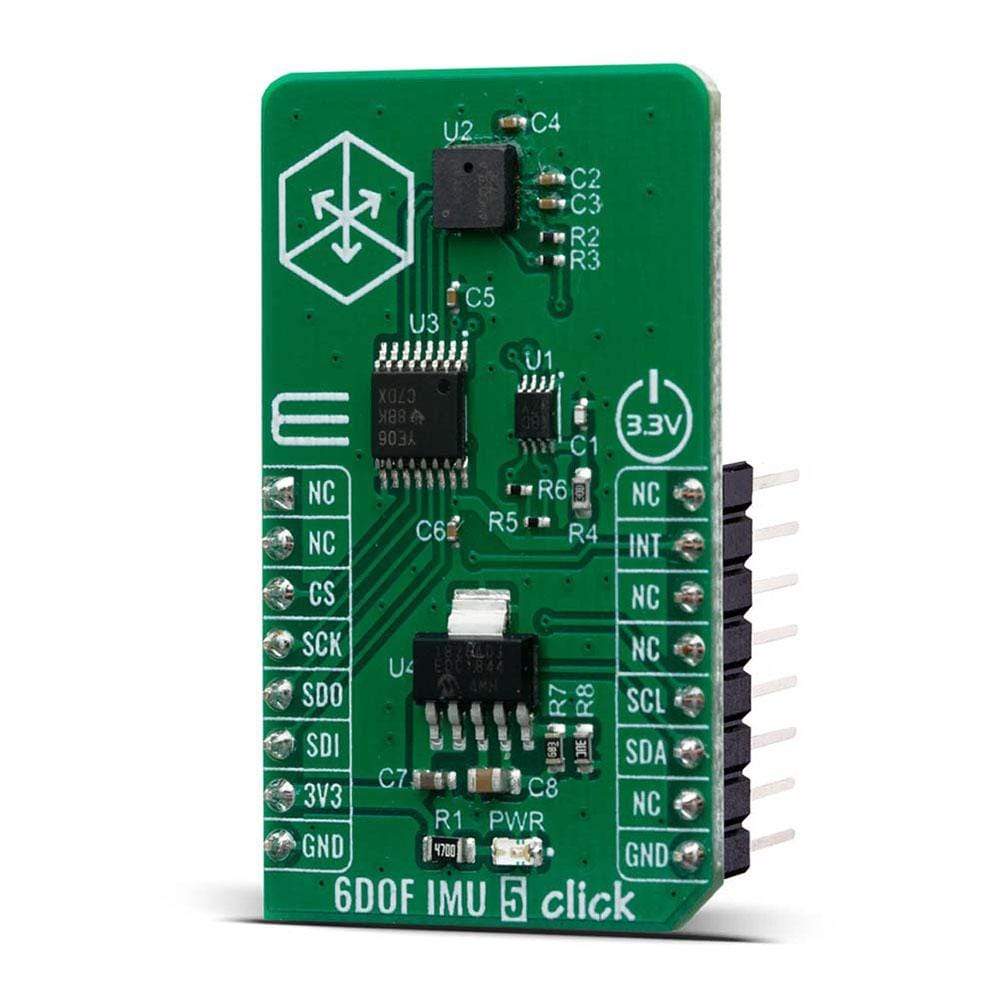
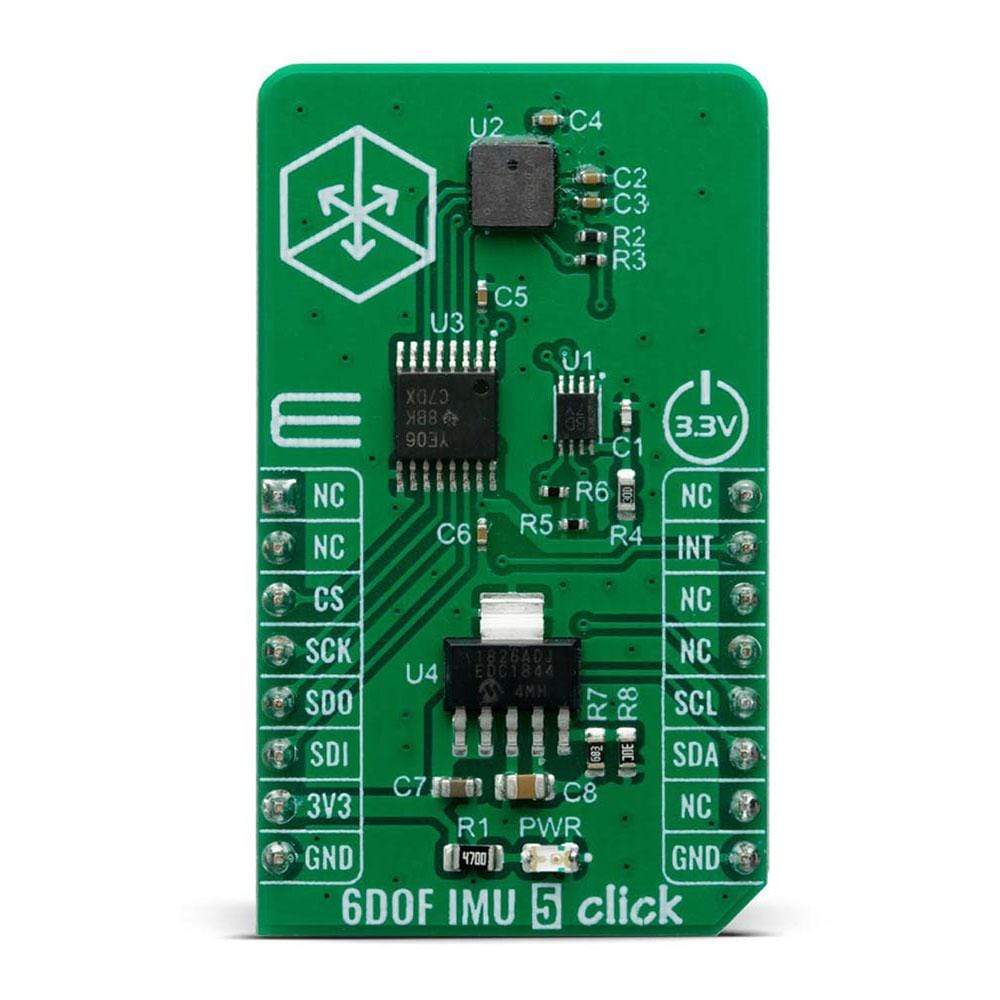
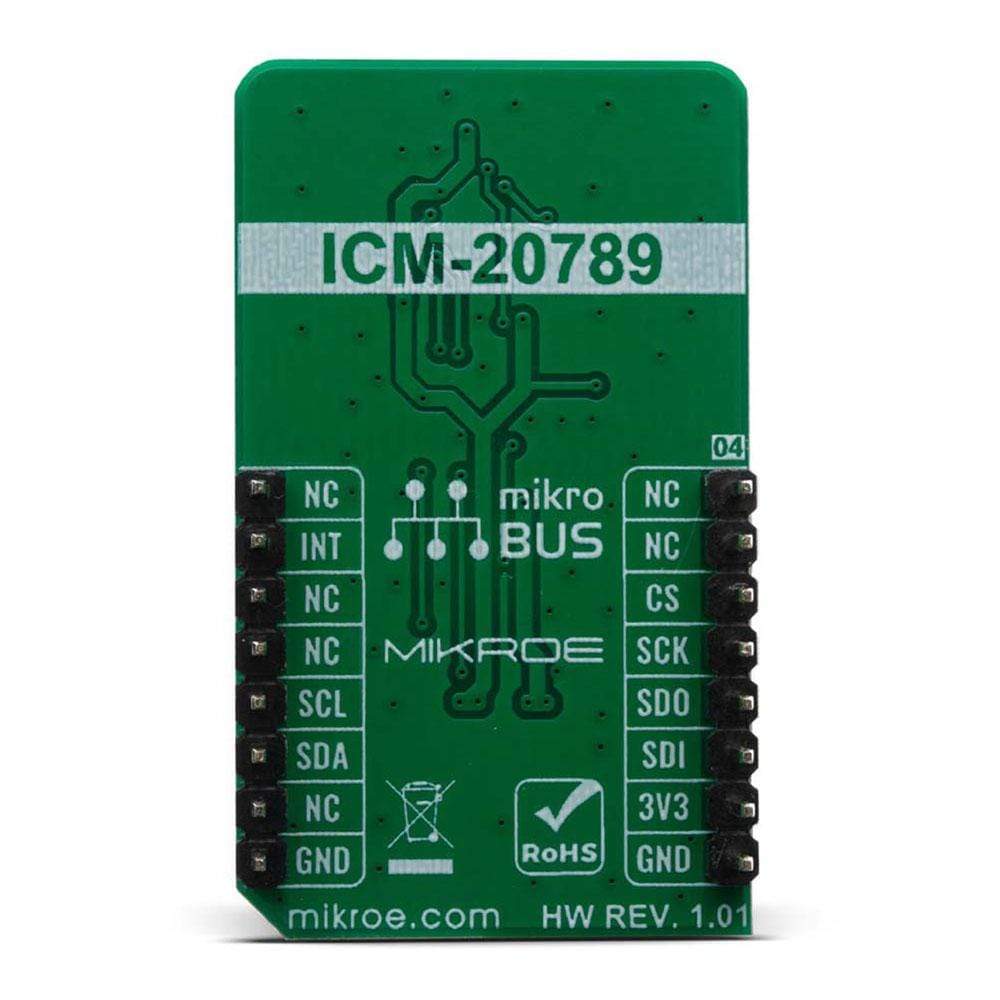
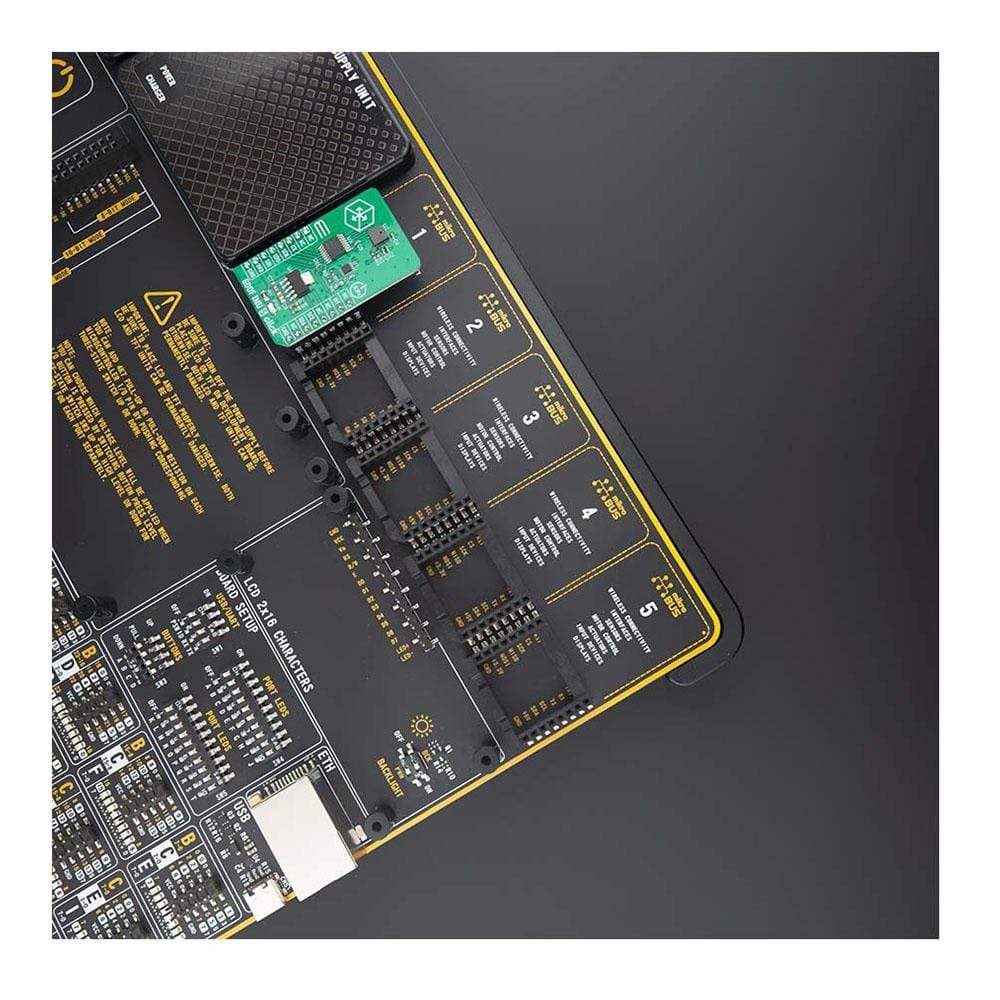
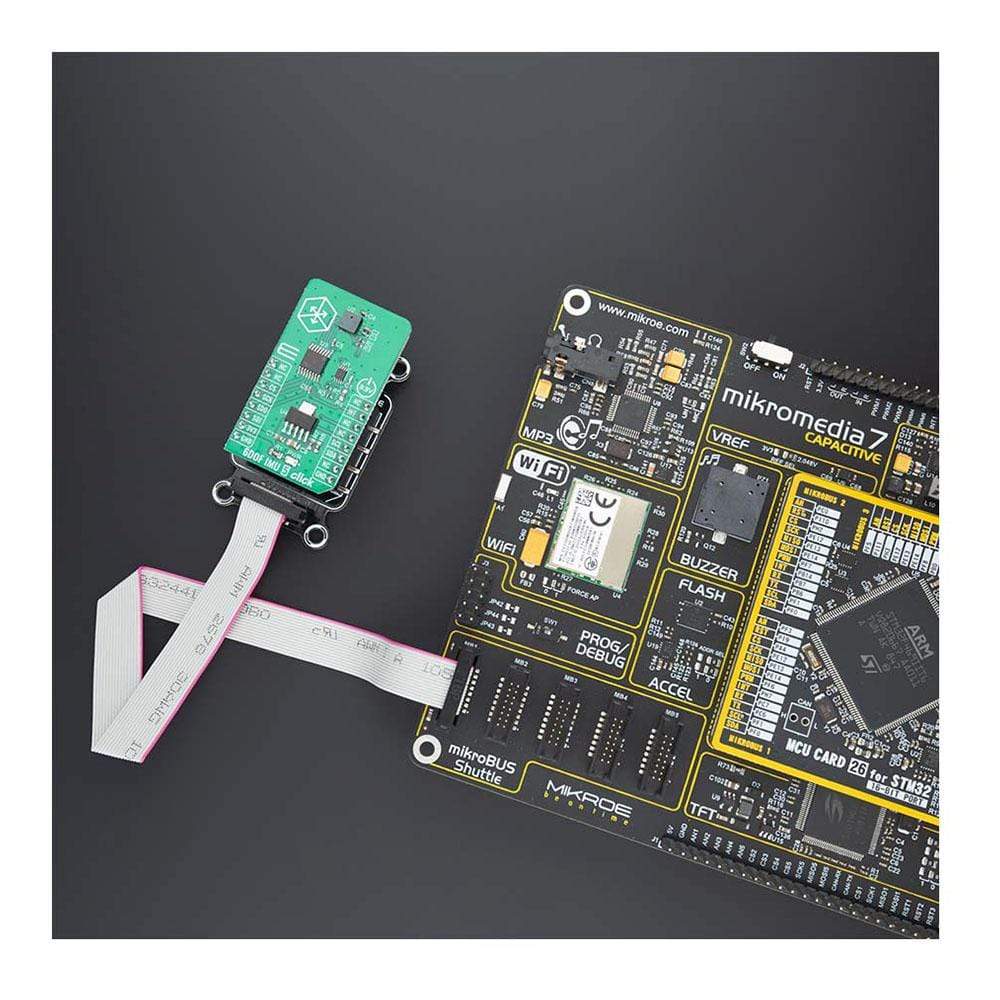
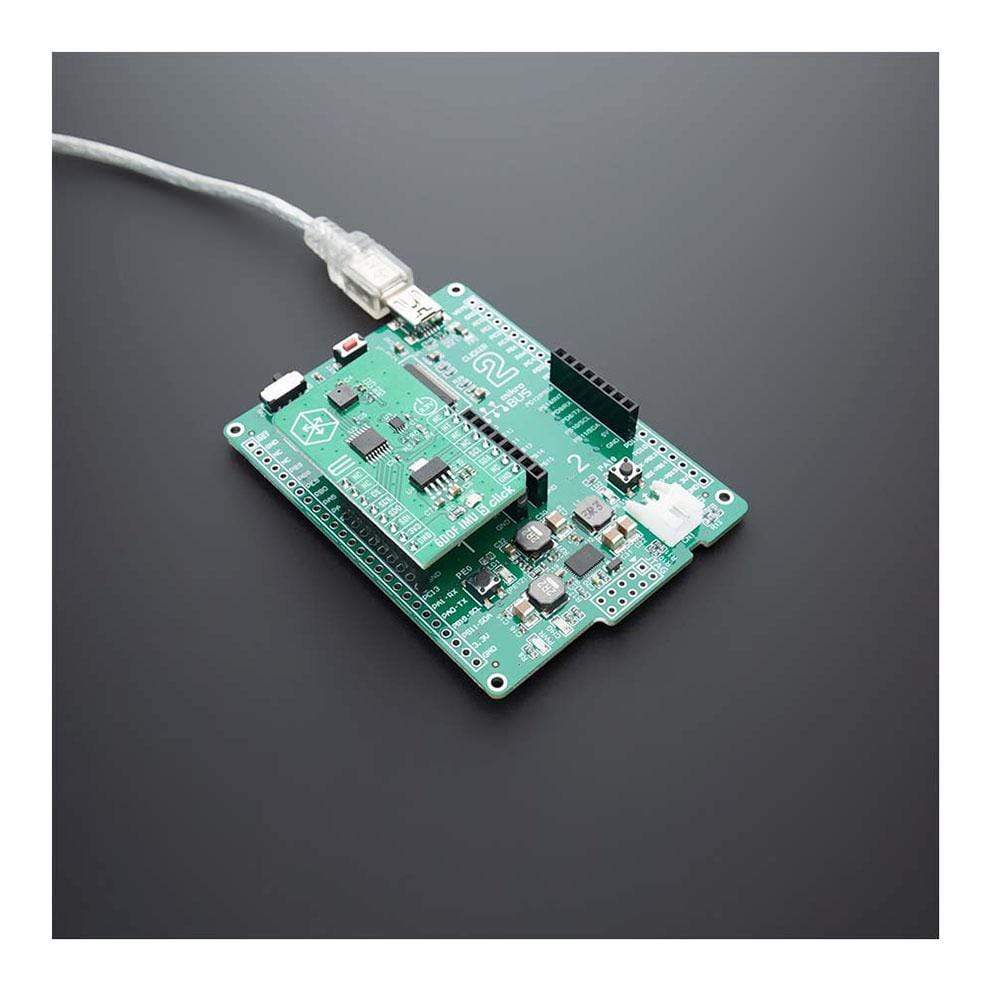
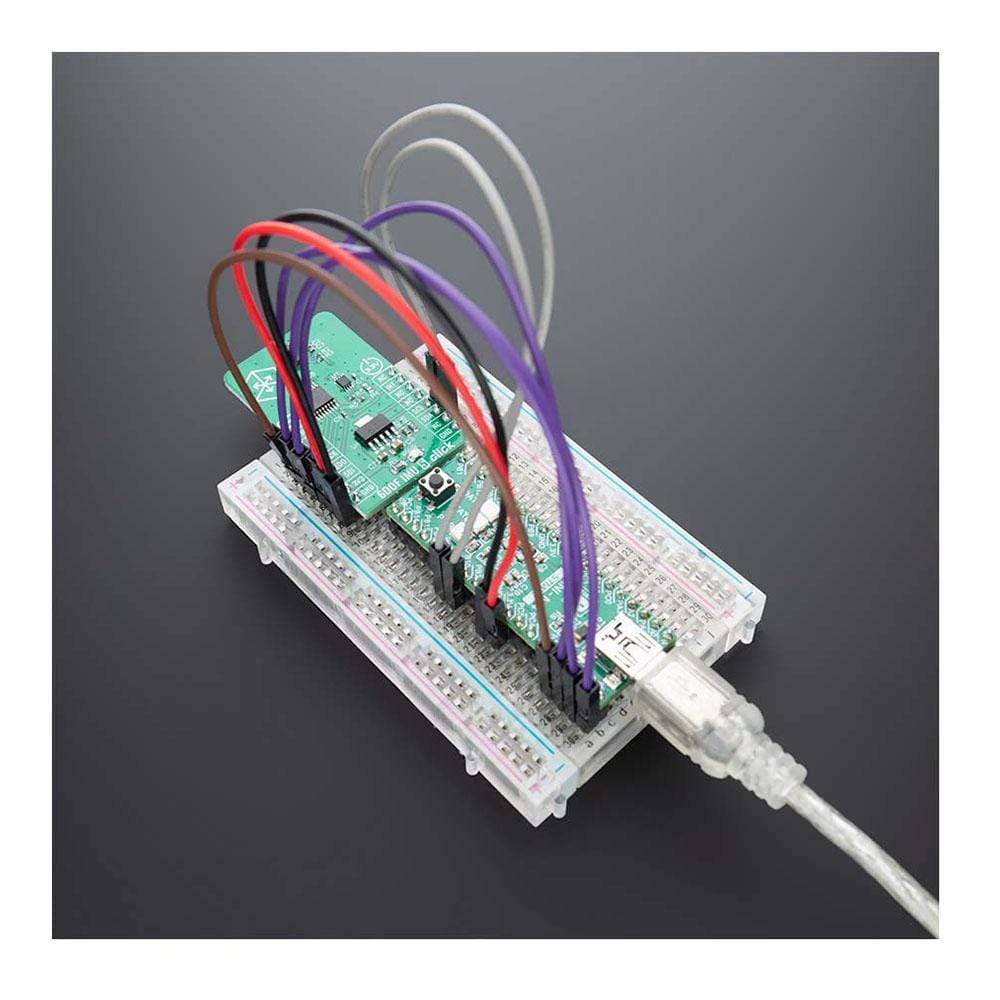
Overview
The 6DOF IMU 5 Click Board™ features a 7-Axis ICM-20789 chip from TDK, an integrated 6-axis inertial device that combines a 3-axis gyroscope, 3-axis accelerometer, and an ultra-low noise MEMS capacitive pressure sensor. This unique 7-Axis device offers great performance with an accuracy of ±1 Pa, an accuracy enabling altitude measurement differentials as small as 8.5 cm. The pressure sensor’s MEMS capacitive architecture provides the industry’s lowest noise at the lowest power, high sensor throughput, and temperature coefficient offset of ±0.5 Pa/°C. The combination of high accuracy elevation measurements, low power, and temperature stability makes it ideal for a wide range of motion tracking applications.
The 6DOF IMU 5 Click Board is supported by a mikroSDK-compliant library, which includes functions that simplify software development. This Click Board™ comes as a fully tested product, ready to be used on a system equipped with the mikroBUS™ socket.
Downloads
Der 6DOF IMU 5 Click Board™ verfügt über einen 7-Achsen-ICM-20789-Chip von TDK, ein integriertes 6-Achsen-Trägheitsgerät, das ein 3-Achsen-Gyroskop, einen 3-Achsen-Beschleunigungsmesser und einen extrem rauscharmen kapazitiven MEMS-Drucksensor kombiniert. Dieses einzigartige 7-Achsen-Gerät bietet eine hervorragende Leistung mit einer Genauigkeit von ±1 Pa, eine Genauigkeit, die Höhenmessdifferenzen von nur 8,5 cm ermöglicht. Die kapazitive MEMS-Architektur des Drucksensors bietet das branchenweit niedrigste Rauschen bei niedrigstem Stromverbrauch, einen hohen Sensordurchsatz und einen Temperaturkoeffizienten-Offset von ±0,5 Pa/°C. Die Kombination aus hochgenauen Höhenmessungen, geringem Stromverbrauch und Temperaturstabilität macht es ideal für eine breite Palette von Bewegungsverfolgungsanwendungen.
Das 6DOF IMU 5 Click Board wird von einer mikroSDK-kompatiblen Bibliothek unterstützt, die Funktionen enthält, die die Softwareentwicklung vereinfachen. Dieses Click Board™ wird als vollständig getestetes Produkt geliefert und ist bereit für den Einsatz auf einem System, das mit der mikroBUS™-Buchse ausgestattet ist.
| General Information | |
|---|---|
Part Number (SKU) |
MIKROE-4089
|
Manufacturer |
|
| Physical and Mechanical | |
Weight |
0.02 kg
|
| Other | |
Country of Origin |
|
HS Code Customs Tariff code
|
|
EAN |
8606018717316
|
Warranty |
|
Frequently Asked Questions
Have a Question?
Be the first to ask a question about this.







